I have used several Nikon D90 cameras at various times. In whatever conditions they were not: I constantly carried cameras with me in hikes, reinstalled lenses millions of times, in the rain, in the cold and on hot days - but the cameras worked like clockwork. Of course, I understand that good copies of Nikon D90 may have come across, but still, many years of trouble-free operation and mileage of over 130.000 (one hundred thirty thousand) of one copy and over 250.000 (a quarter of a million) of the second copy only gives rise to positive reviews.
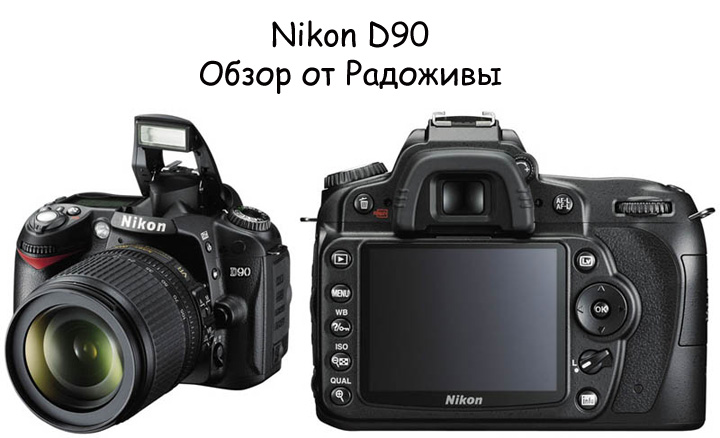
Review of the Nikon D90. View of the camera itself.
To fully understand and understand the camera, you just need read the instructionsIt’s long and boring, but I don’t see another way. The quality of the pictures very much depends on the lens and the methodology of your shooting, as well as image control mode, therefore, to say that the camera shoots better or worse is blasphemy, we can only talk about its ergonomics, technical characteristics and direct work experience. Always remember that important how to take pictures, but not by what means.
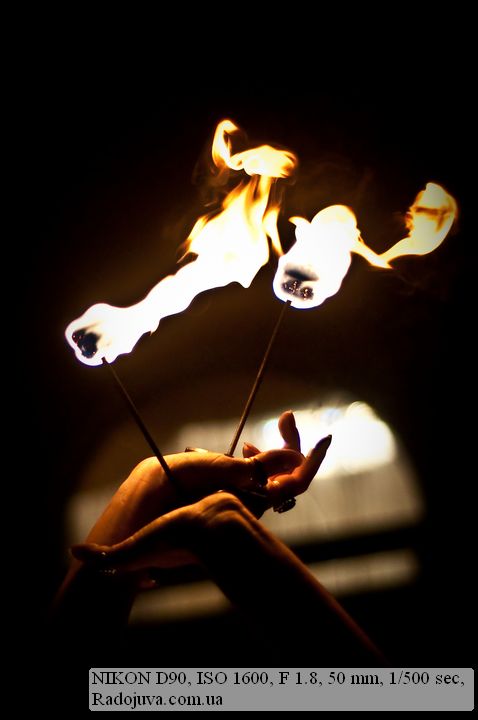
Sample photos on Nikon D90
And so, the camera belongs to the class of digital mirrors mid-range cameras... The Nikon D90 is often said to be an advanced amateur camera. Therefore, please note that this is not a professional camera, as they often write on the Internet (especially in online stores), professional cameras - is D300(s) D200, D700, D3(x, s), D4, D800(E) - therefore, you need to understand that the device is more aimed at amateurs than at professionals. The main feature of the camera is that the set of functions allows you to use the Nikon D90 just as well as professional technology, but with some limitations.
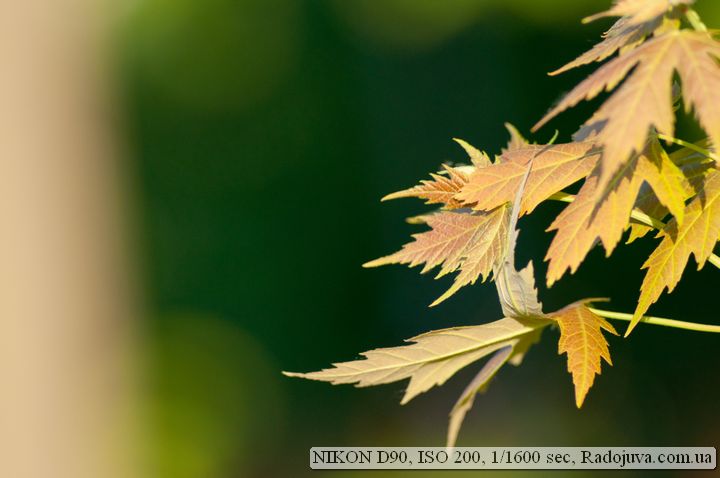
Sample photo on Nikon D90
The main parameters of Nikon D90, which are worth paying attention to
1. Live view
2. HD video 1280 * 720 24k \ s
3MP CMOS sensor
4. Aluminum-magnesium case with a bunch of buttons
5. Built-in autofocus drive
6. Additional screen
7. 4.5 frames \ second
8. Flash operating in Comand mode and FP mode
9. Lithium-ion battery
10. Matrix cleaning system
11. Bracketing exposure
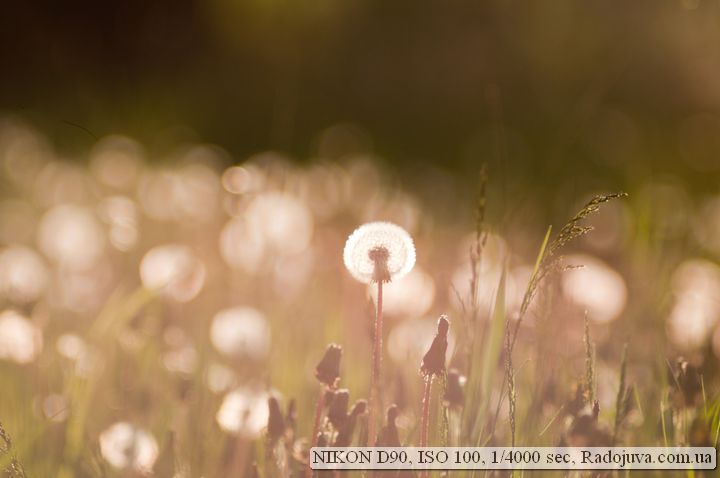
Example photo on Nikon D90
Now let's go through each item from a practical point of view.
1. Live View. Under live view it means “Live View” and in Nikon D90 it is quite a strong point.
First: made for the D90 very large screen (920.000 points - the same as in professional D3, D700) from which you can not tear yourself away. He even knows how to show slide shows to music!
Secondly: very convenient button to switch to live view - just clicked and the incomprehensible digital SLR turned into an ordinary soap box (useful for people who just switched to SLR cameras and just can't figure out what to see through the viewfinder).
Third: this mode allows clearly control focus at any point in your frame. Let’s take a closer look - when sighting you can select any area in the frame with the joystick and zoom it in on a scale of 1 to 1 - that is, select any point for focusing. This mode is indispensable when working with manual (non-autofocus lenses) and a tripod.
True, it takes time to get used to the work of the mirror, which adds unnecessary sounds and clinks when working. The mirror and shutter clicks when Live View is enabled, and when shooting, they click twice. It may seem that the camera is taking extra frames. A huge disadvantage of this mode is that autofocus works very, very slowly, and in video mode it does not work at all.
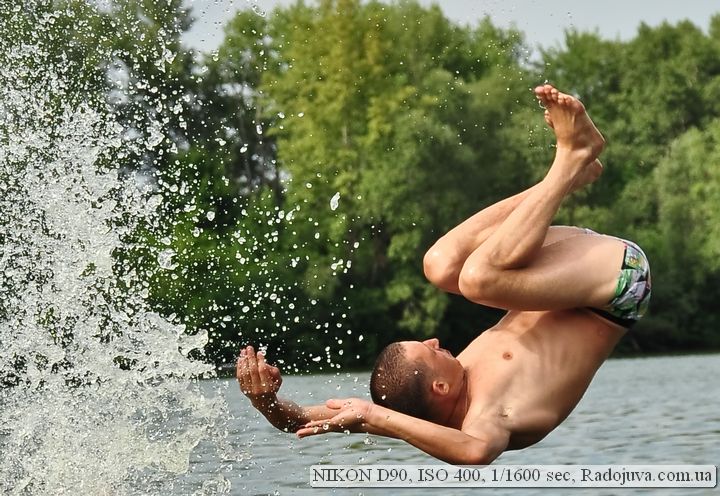
Photo on Nikon D90
2.HD video 1280 * 720 24k \ s without autofocus - absolutely unnecessary thing for a photographer
Why not necessary - because who will watch the video without autofocus? Okay, you can still take photos somehow in manual focus mode, but video with manual focus, when the scene changes at the speed of light, is a very difficult task. I recommend shooting video only with a tripod. A couple of times I shot a video with my hands - you can shoot, but again, it's very, very difficult. One more camera - Nikon D5000 - has video without autofocus.
The video itself is quite solid, in Motion JPEG format - which means that it “weighs” a lot. I advise you to immediately distill it into any of the popular formats after shooting - save a lot of disk space. Also, I advise you to block the exposure when shooting a video so that there are no tonal differences when changing the composition in the frame. Another serious problem with video is limiting the duration of the clip in 1280*720 up to 5 minutes. On the one hand, 5 minutes is quite enough to create short video selections, but I had to film my friend's performance once, and the 5 minute limit made the process very difficult. Also, after several 5-minute clips, the camera starts shooting clips up to 30 seconds long and turns off automatically, most likely due to the sensor overheating. The Nikon D90 is the first camera from Nikon with the ability to shoot video, so you shouldn't ask more of it. If you need a Nikon camera that shoots videos well and has automatic focus, then I advise you to look at the model Nikon D3100, Nikon D5100 и Nikon D7000.
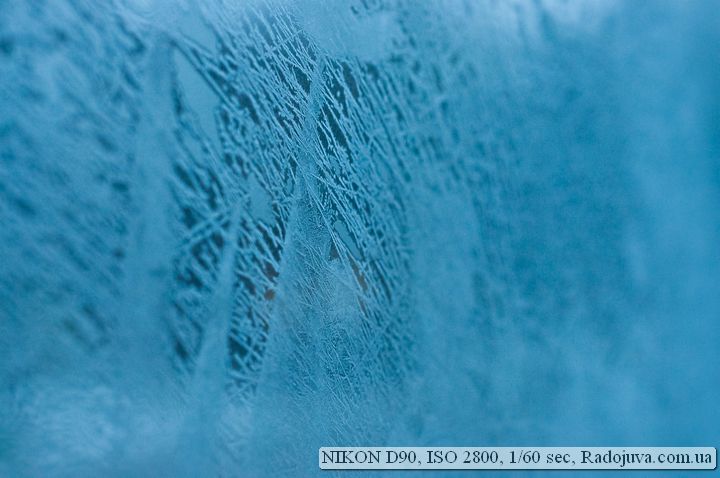
Photo on the Nikon D90. At high ISO.
3MP CMOS - just right
Why more? The more pixels - the higher the density and there may be more noise, due to the fact that the matrix cell is smaller and smaller - which means that it can catch less light. I advise you to read my article Battle of Megapixels.
The matrix is excellent. Of course, I already see noise at ISO 400, but at ISO 1600 they are still quite tolerant.
A very important point I noticed when working at high ISO, that the noise increases sharply after ISO 2500, that is, at ISO 2500 you can still squeeze something out, but then the quality of the photo drops dramatically. I recommend shooting at the proven ISO 200 and not raising ISO above 1600. ISO LO-1 (100) should be enabled only on a bright day, when you need to get some kind of portrait with an open aperture in order to keep within the shutter speed of 1 / 4000s. The values of ISO Hi1, Hi0.3, Hi0.7 are a kind of software wrapping of ISO, at such values it is practically impossible to get a low-noise picture.
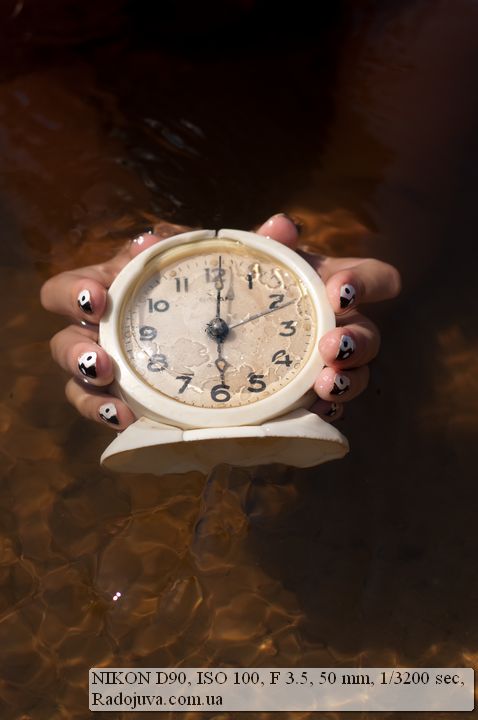
Sample photo on Nikon D90
4. Aluminum-magnesium housing (part)
In the introduction, I wrote that I constantly use, drag, ride with this camera and it feels quite adequately. Aluminum-magnesium alloy (although I did not find such information on the manufacturer’s website, but by weight, it’s not plastic) and one rubber insert, make the camera very practical, well-knocked down and provide excellent weight balance with different lenses. Perhaps for little hands it will be a little bit wrong, but for the serious hand of the photographer it’s just lovely.
On the body is a whole bunch of buttons. In the camera - the more the better. You can get quick access to all the basic functions and not scroll through the huge menu. I configured the programmable button to change the type of focus.
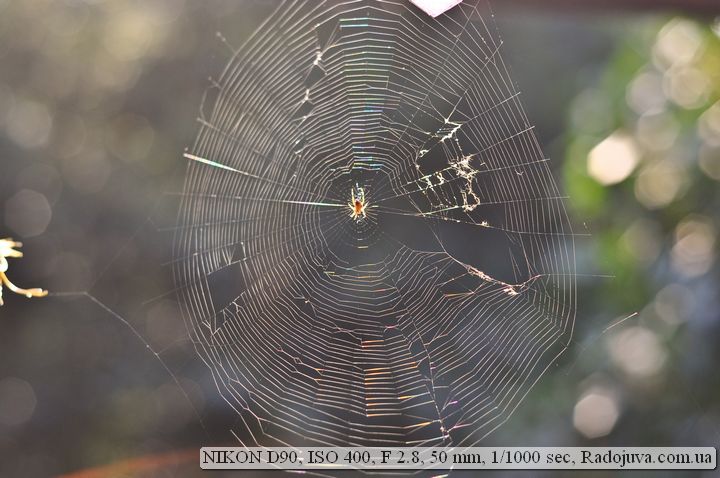
Wildlife Photo on Nikon D90
5. Built-in autofocus drive
A panacea for saving money and a panacea for professionals. The Nikon D90 camera has a built-in auto focus motor (screwdriver) for working with lenses marked AF. This allows you to use optics without a built-in focusing system (which means that you can use any autofocus lenses). Usually such optics are cheaper, for example, you can buy Nikon 50mm F1.8D AF for only $ 150 and feel like a real professional. Also, a huge portion of professional optics simply go without an auto focus motor. For example, there is simply no analogue for the Nikkor 135 DC with a built-in autofocus motor. More details about the compatibility of Nikon lenses in my article - Lens difference.
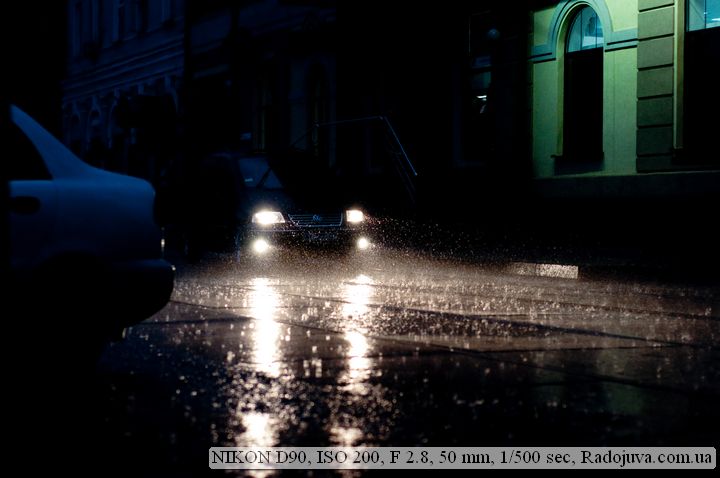
Photo on Nikon D90
6. Optional monochronous screen.
Recently I read on the Internet that the small monochrome display on the D90 is archaism, I was very surprised by this. In fact, it is not, the additional display is very good ergonomics and saves time, battery power, unnecessary movements. Let me explain - the display is always on top and you do not need to turn the camera upside down to look at the main display, secondly, it has a very high contrast in the sun (everything is visible), thirdly, it does not consume the battery (even the backlight mode of the additional screen uses a lot less charge than the main display). In general, the camera looks even more impressive with him. By the way - the backlight mode is turned on by turning the camera switch to the right. He himself then returns to its original position. Below is one of the most serious disadvantages associated with this lever.
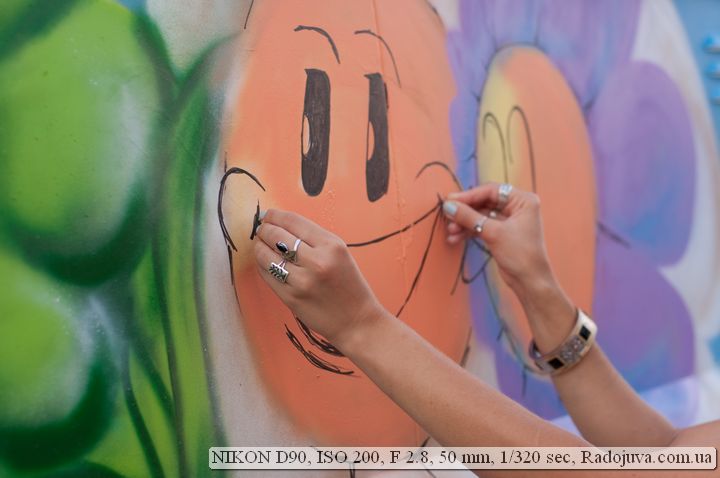
Photo on Nikon D90
7 - 4.5 frames / second
Someone can say, they say, stamps from Kenon are shot at 10 frames per second, the same D3 shoots 8 frames per second, but what can I say, D300 with a battery pack squeezes 8 frames per second. And now the question is - why do you need it? Burst shooting is very rare. 3 frames per second is already quite enough, the rest is only for specific tasks. Therefore, almost 5 frames per second is a pretty strong point. Conduct an experiment - at what speed can you press the camera button in the frame shooting mode? The same 5 times plus or minus will come out. In any case, the Nikon D90 has a higher rate of fire than the new, very expensive professional Nikon D800which can shoot at speeds up to 4 fps.
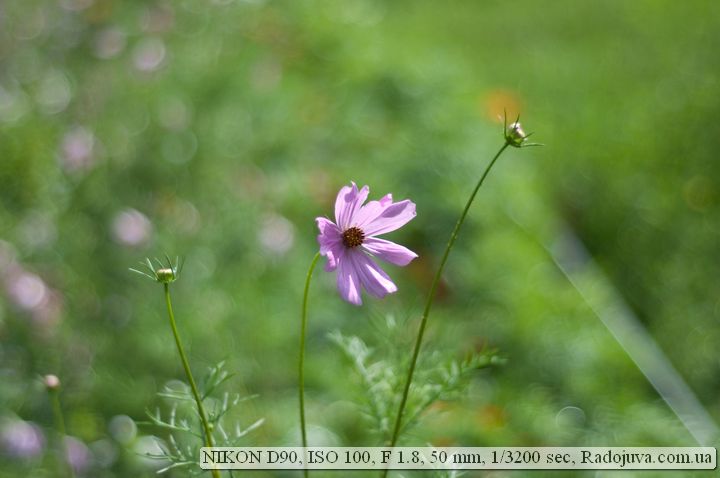
Sample photo on Nikon D90
8. Comand mode flash and FP support
Classics from Nikon. No need to buy expensive flash units or synchronizers - just go to the bracketing \ flash menu and select flash control mode C. Set the channel and group and control external flash units, such as SB-600, SB-700, SB-900, SB-800 и SB-910. Also do not forget that you can configure the built-in flash so that it gives only commands and does not take part in the shooting itself.
Then the most interesting - quick sync mode... With external flashes, you can set any shutter speed, up to 1/4000. Those who have not encountered such a problem will not understand; who knows, they will be glad. Few cameras support this mode. Why you need this, you can find, for example, in my article - 'flash in the afternoon '.
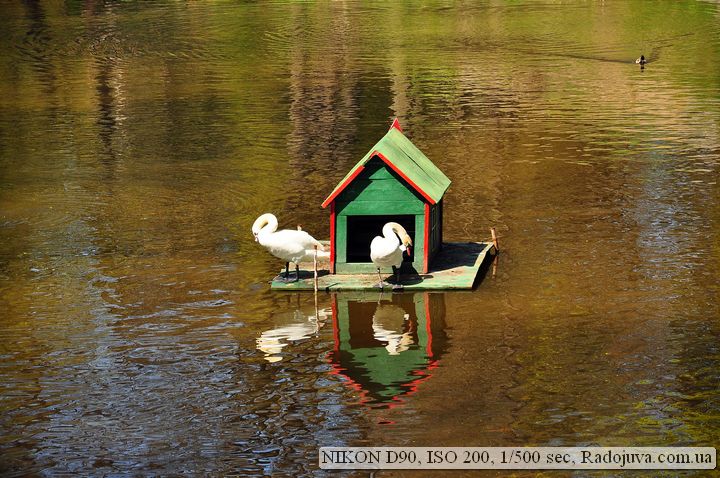
Sample photo on Nikon D90
9. Rechargeable Li-ion Battery EN-EL3e
Great armor-piercing battery. Also suitable for D700, D200, D300(s) etc. Withstands flash without over 2000 frames. The instructions say that it can provide work for 1200 shots, a third made with the flash - somewhere it is. The number of shots is greatly affected by the type of lens (e.g. VR mode), delay modes of the main display, etc.
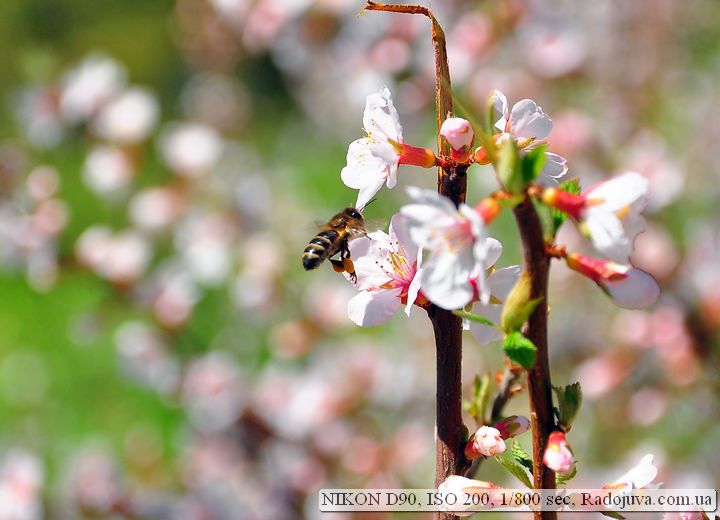
Sample photo on Nikon D90
10. Matrix cleaning system
A very useful thing. I recommend setting the cleaning when you turn off the camera, because when you turn it on, you often need to take pictures right away, and when you turn it off, let it clean for yourself. I advise you about cleaning the matrix read here.
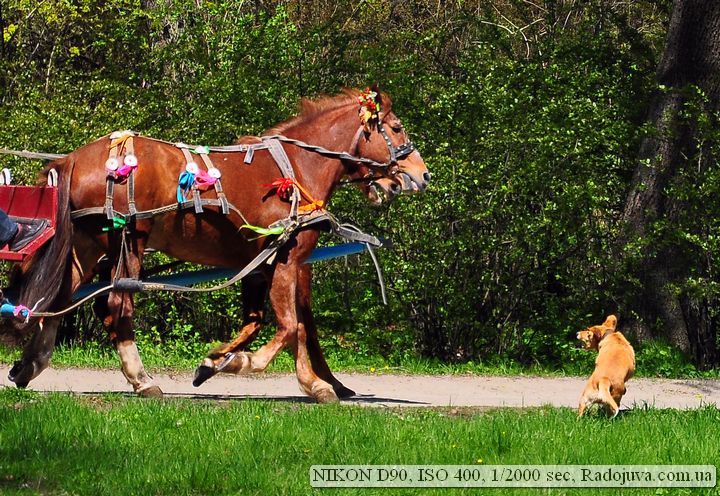
Sample photo on Nikon D90
11. Bracketing exposure
Bracketing allows you to shoot without fear for the correct exposure. True, this requires additional time, battery wear and fast filling of the memory card. It is under bracketing 4.5 frames per second are useful. I recommend not much use bracketing, it’s better to adjust the camera (especially the amendment exposure) and make one frame in RAW, and then, if anything, hold it out programmatically rather than slam the shutter on expo.
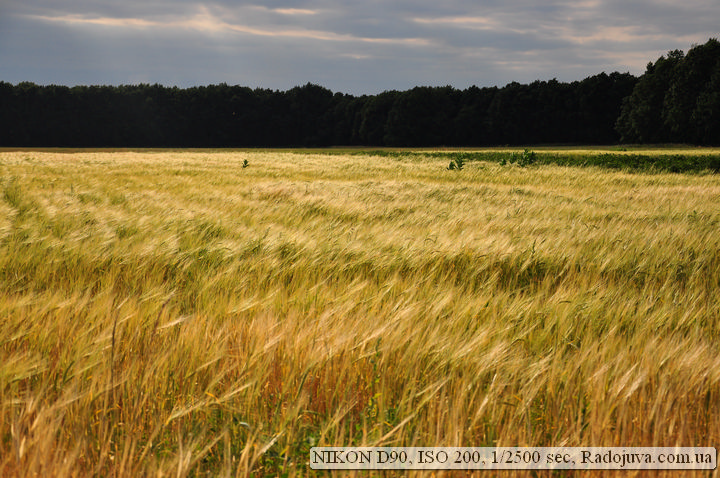
Nature photo on Nikon D90
I would like to note a number of huge advantages: wA wide range of functions to improve the picture - noise reduction functions, D-lighting etc.
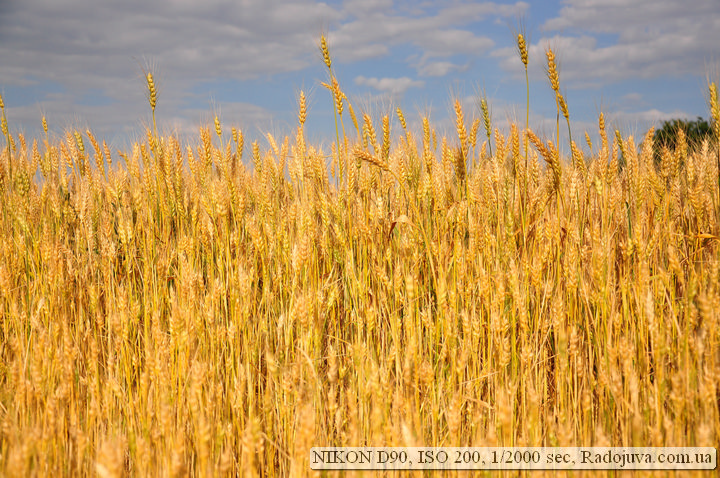
Nikon D90 photo
The disadvantages of the Nikon D90:
The strongest minus when working with the camera, I consider a strong return of the shutdown lever - that is, when you turn on the backlight of the additional screen, the lever moves back to the “ON” position, but its inertia is very strong and it goes further and turns off the camera (to the “OFF” position), therefore, you need to smoothly remove your finger after turning on the backlight of the additional screen. Very unpleasant stories are associated with this glitch, when at night, at important moments, the camera simply went out after setting the settings on the external display. Also, this switch is pretty loose, but it still works stably.
Also, after active work for a year, the rubber band, which is located to the right of the display, fell off, it expanded slightly and peeled off. I noticed that the rubber band covers the activity indicator of the memory card, that is, there is a fear of pushing the indicator deep into the camera and damaging it. The disease was treated by cutting off excess rubber and superglue. D90 got this disease from D200 and from D80. But, of course, I use my D90 camera a lot.
Exposure in 1/4000 second - if you haven’t understood yet, then when shooting with fast lenses starting with aperture of F / 1.8 and lower, you will miss the shutter speed, even at the lowest ISO.
Metering (exposure meter) does not work with non-chip lenses. It would be nothing, but this is just the camera and inferior to professional ones, such as D200 and older, almost any lens can be attached to them and the camera will operate in semi-automatic aperture priority mode or in good old manual mode. This really limits the operation of the camera with completely manual (without processor contacts) lenses, for example, Soviet ones - and you have to completely set all the settings “by eye”. Personally, I would very much like this function, since I am a fan of photographing with Soviet (and post-Soviet) optics.
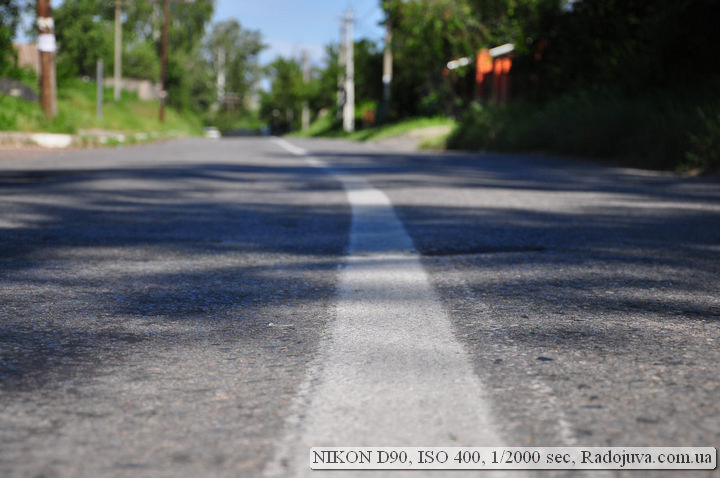
Photo on Nikon D90
For 3d tracking focus, there are not enough points (focus areas), and indeed, not enough focus points for such a solid camera.
No one wants depth of field view button imaged space. I use it very rarely, for example, in macro photography, but usually in 99% it is not needed. A funny thing that I advise you to check is to raise the flash and press the depth of field button (it’s located below, under the lens mount) and you will see that for a couple of seconds the flash works as a flashlight (using the strobe effect)
I consider one more unnecessary button \ property focus point lock button. It was useful to me only a couple of times, when I very strongly brought the camera to my face and accidentally pressed the joystick, thereby changing the focus point, in other cases, the point retains its position. It would be better instead of it to set the lever for changing the metering (as in older models), and so you have to press the top button near the external display and turn one of the selectors.
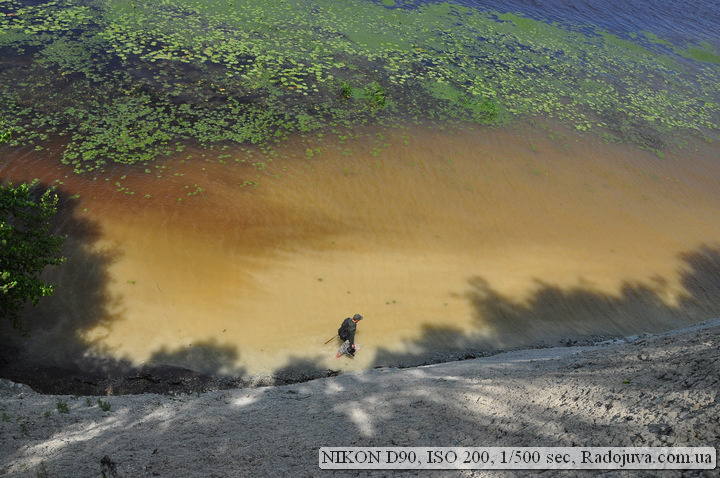
Photo at Nikon D90
Brief comparison with Nikon D80:
D90 is a descendant Nikon D80, which has an increased rate of fire, a different type of sensor (CMOS VS CCD), a central multi selector button is added, there is a Live View function and the ability to record video, and the display is also enlarged. Battery, menu navigation, ergonomics and other important functions remained the same. If you Nikon D80 I do not recommend upgrading the Nikon D90, as the main functions of the cameras are the same.
A brief comparison of Nikon 90 with D300, D300s:
D300, D300s Are professional cameras from Nikon, and the amateur D90 cannot compete with them. IN D300, D300s stronger body excerpt up to 1/8000, a professional camera control interface, high rate of fire and the ability to work with manual lenses, this is where the main differences end. I do not recommend overpaying for D300, D300s unless you have to shoot 1000 frames every day.
A brief comparison of Nikon 90 with D7000:
D7000 surpasses even the Nikon D300 in a number of parameters, D300s, and especially Nikon D90, because as an upgrade I recommend only Nikon D7000 or already ff Nikon D700, D600, D800.
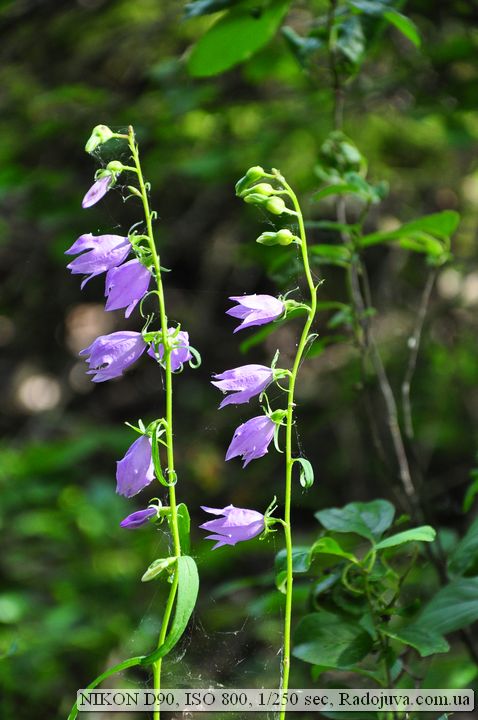
Photo at Nikon D90
Fit in the Nikon D90 Camera I think control with infrared remote Nikon ML-L3It costs a penny, and gives a lot of opportunities.
Attention: The final result of the image in the photograph depends very much on a large number of factors and the camera does not play the first role in this quantity, therefore, when photographing, remember - important how to take pictures, and don't try hard to find the best camera.
Sample Photos
The photos in the gallery below were shot on a budget lens Yongnuo 35mm f / 2 (model YN35mm F2N for Nikon cameras) and shown without treatment. Part of the photos is the conversion of the source RAW files by the original Nikon ViewNX-i utility without any additional adjustments, the other part is the original on-camera JPEG.
Download source files in format JPEG can at this link (114 files in the '.JPG' format, 735 MB).
More examples of photos, as well as source files, can be found in the reviews:
- YONGNUO LENS YN50mm F1.4N E
- Nikon DX AF-S Nikkor 18-55mm 1: 3.5-5.6GII ED SWM Aspherical
- Nikon N AF-S Nikkor 58mm 1: 1.4G Nano Crystal Coat SWM Aspherical
- YONGNUO 50mm 1: 1.8 (YN50mm F1.8N)
- Tokina VCM-S AT-X PRO SD 70-200 F4 (IF) FX N / AIS
- Nikon AF Nikkor 28mm 1: 2.8 (MKI)
- Tokina AT-X 80-400mm 1: 4.5-5.6 (AT-X 840 AF-II)
- Nikon AF Nikkor 20mm 1: 2.8D
- Tamron PZD Di 28-300mm F / 3.5-6.3 Piezo Drive VC Model A010
- Nikon Zoom-NIKKOR 80-200mm 1: 4.5 (AI, MKII)
- SIGMA ZOOM 28-105mm D 1: 2.8-4 DG
- Nikon AF Nikkor 28-70mm 1: 3.5-4.5 (MKI)
- Sigma 135-400mm 1: 4.5-5.6 D APO
- Tokina SD 24-70 F2.8 (IF) FX AT-X PRO Aspherical
- Nikon AF Micro Nikkor 105mm 1: 2.8 (MKI)
- Tamron 16-300mm F / 3.5-6.3 Di II PZD VC Model B016
- Tokina 107 Fisheye 10-17mm F3.5-4.5 DX AT-X Internal Focus
- INDUSTRAR 22U-1 1: 3,5 F = 50mm P
- LOMO RO501-1 F = 100 1: 2
- Nikon ED AF Nikkor 80-200mm 1: 2.8 (MKI)
- LOMO RO500-1 F = 90 1: 2
- Tokina AT-X PRO AF 28-70mm 1: 2.6-2.8 (Tokina AT-X 270 AF PRO)
- Nikon Lens Series E Zoom 75-150mm 1: 3.5 (MKII)
- Sigma DC 17-70mm 1: 2.8-4.5 MACRO HSM
- Tokina AT-X PRO SD 11-20 F2.8 (IF) DX ASPHERICAL
- SIGMA ZOOM 55-200mm 1: 4-5.6 DC HSM
- TAIR-3 4,5 / 300A
- Nikon DX AF-S Nikkor 55-200mm 1: 4-5.6GII ED VR II
- QUANTARAY TECH-10 NF AF MULTI-COATED 1: 4-5.6 f = 75-300mm
- Nikon NIKKOR-SC Auto 1: 1.2 f = 55mm
- Sigma DC 18-50mm 1: 2.8 EX MACRO HSM
- Tamron AF Aspherical 28-80mm 1: 3.5-5.6 177D
- Quantaray 70-300mm 1: 4-5.6 D LDO MACRO for Nikon AF, MACRO (200-300)
- SIGMA ZOOM 28-200mmD 1: 3.8-5.6 UC Aspherical
- Quantaray 70-300mm 1: 4-5.6 D LDO MACRO for Nikon AF
- MC PANCOLAR 1,8 / 50 CARL ZEISS JENA DDR
- YONGNUO 40mm 1: 2.8 (YN40mm F2.8N)
- Sigma 70-300mm D 1: 4-5.6 APO DG
- TOKINA AF 70-210 1: 4-5.6
- Sigma 70-300mm 1: 4-5.6 D DL MACRO SUPER
- Quantaray for Nikon AF 28-300mm 1: 3.5-6.3 LDO Multi-Coated (28-300mmD Ashperical IF)
- SIGMA ZOOM 28-300mm 1: 3.5-6.3 DG MACRO
- YONGNUO LENS YN 14mm F 2.8 N
- Tamron AF Tele-Macro 70-210mm 1: 4-5.6 158DN
- I-26m-U 2,8 / 52
- Sigma Zoom DC 18-200mm 1: 3.5-6.3 II HSM OS
- Yongnuo YN 85mm F1.8N
- INDUSTRAR 22U-1 1: 3,5 F = 50mm P
- SIGMA ZOOM 18-50mm 1: 2.8 EX DC (D)
- Nikon IX-NIKKOR 60-180mm 1: 4-5.6
- YONGNUO LENS 100mm 1: 2 (YN100mm F2N, for Nikon)
- PROMASTER DIGITAL XR EDO AF Aspherical LD (IF) 18-200mm 1: 3.5-6.3 Macro
- Tamron Di II SP 17-50mm F / 2.8 VC
- MC HELIOS-44M-4 58mm 1: 2
- YONGNUO 35mm 1: 2 (YN35mm F2N)
- Sigma DC 17-70mm 1: 2.8-4.5
- Nikon ED AF-S Nikkor 300mm 1: 4D IF Silent Wave Motor
- Yongnuo YN60mm F2NE MF MACRO
Prices for modern Nikon cameras in popular stores can look at this link.
Video review, retrospective
Comments on this post do not require registration. Anyone can leave a comment. Many different photographic equipment can be found on AliExpress.
Conclusions:
In general, the Nikon D90 camera is simply lovely, a wide range of functions will allow both professional and amateur to work. The speed of work and the quality of the picture are very pleasing.
Material prepared Arkady Shapoval. Training/Consultations | Youtube | Facebook | Instagram | Twitter | Telegram





































Hello everyone. I'm going to take a 90 piece.
Please tell me whether it is displayed on a small upper display
NIKON 90 has a horizontal scale for correct exposure setting, like on KENONA?
I hope you understand what I mean?
THANKS.
Vadim no not displayed
Thank you for your reply.
Then maybe this scale is in the viewfinder and without breaking away from it, you can adjust the metering settings?
Or is it shown only on the main display?
Thank you.
The viewfinder has a light meter, of course.
Hello.
I want to buy a lens Tamron AF 18-200mm F / 3,5-6,3 XR Di II LD Asp. (IF) Macro for Nikon. What do you think will work well? Or can you tell me some other lens on it?
Ksenia really do not advise taking this Tamron - a rare shit. Take Nikon's optics - you won't go wrong
18-200 tamron and really not a good thing
Ksenia I will sell a new Nikonavsky lens ... 18/200, if interested, write to the mail
Good evening everyone.
I fell into the hands of the D90 forever. Naturally, I immediately wanted to check it in all respects. I'll make a reservation that before that I used the D5100 (and still use it), and here are the results of the "tests".
1) The D90 gives a much less juicy picture than the D5100, change / do not change the settings, it doesn’t react in any way. I read, of course, the review by Arkady about the fact that the D5100 gives good color rendition, but did not really expect such a difference. I think the D5100 spoiled me with its colors, therefore I criticize the D90.
2) It’s also not entirely clear to me why the D90 has deeper shadows? I take pictures under absolutely identical conditions for 2 cameras, but the D90 sometimes has black shadows. Exposure, contrast, etc. settings also do not help.
3) Returning to the color of the photo. With BB settings, I just can’t achieve the best result for color reproduction, I tried the BB settings quite a lot, I still get blue, now green, now red, etc. Measuring BB also did not help.
Nevertheless, when I achieve a good result as much as possible, some of the elements in the photographs turn yellow, especially noticeable on the green foliage. BUT, what caught me - on the computer, all the yellowness almost disappears ... .. how is it?
3) There are some issues with high ISOs too, but for now I'm trying to figure it out.
In general, I really like the camera, of course it is much heavier than the D5100, and the buttons (personal opinion) are not very convenient. Of course, who started with what. For example, on the D5100, the button for viewing the image, under the thumb with your right finger, that is, after clicking the button, looks and continues to work. In D90, the button for viewing is oriented to the left hand (moreover, it seems that it’s male). This is all provided that you have disabled image viewing to save battery, for example.
If someone has met this, share how to deal with it. I understand that there are differences between cameras and cameras, and demanding the same results is most likely stupid. And, of course, many will say that the editor is to help, the editor is certainly a great thing, but ... Or just tell us what it might be connected with. For example, with the difference in matrices, camera generations, etc.
Thank you all, sorry for the long story.
I also compared the D90 only with the D5200, so after the D5200 the D90 does not process dark areas at all. I think the old man still needs to rest, at least there’s no point in buying a new one at all.
Learn to take pictures and read instructions
Oleg, what does your “learn to photograph” have to do with it? Both the D5100 and D5200 have a wider dynamic range by a stop and a half - hence the “deep shadows” of the D90. With the depth of color, the same nonsense - here's a "much less juicy picture". High ISO is the same. But the white balance ...
And so as not to be unfounded, a reference to one authoritative resource, where the numbers tell you everything:
http://www.dxomark.com/Cameras/Compare/Side-by-side/Nikon-D5200-versus-Nikon-D5100-versus-Nikon-D90
Sorry, threw the wrong link. Corrected:
http://www.dxomark.com/Cameras/Compare/Side-by-side/Nikon-D5200-versus-Nikon-D5100-versus-Nikon-D90___850_698_439
You made the right comment firstly read the instructions where it is written to enable Adobe mode and all dynamic extensions will start working secondly if you are so picky and generally shoot in third thirdly you were told correctly above if you didn’t read what you want from a serious device with this approach learn to read and meaningfully. Even the author of the article above wrote carefully after reading the instructions. Once again I say read carefully.
Work in RAW and you will be happy. The lightroom is processed in a few clicks.
Arkady, hello. Tell me, please: D90 + Gelius with an unchipped adapter, mode “M”, “AF - M” set to “M”. I forcibly raise the flash button - the release button is blocked. Whatever I do?
Set the flash to manual control.
Arkady, please tell me how to turn off the list, give birth to u in d 90
close it ... that's all)
And leave the automation; ))))
Thanks for the prompt response, I'll look in the settings (I probably missed it when studying the manual)
good afternoon, everyone here is tormenting me with a question I bought for my d-90 instead of 18-135 ... 24-85 f 2,8-4 from nikkor, and before that I also tried to test sigma 28-70 D. and 28-70 DF both 2,8, 90 hole and that's what I noticed that my d-28 at 24 or 2,8 mm at f90 gets a little back focus. You have not accidentally encountered such a nuance, this is the specifics of d-50 silt. I have such a device, although my 1,4 f1,4 d sometimes hits 24 .. and 85-2,8 f4-300 was checked before buying on a d-3,5 which, in turn, was adjusted, tell me, maybe I need to adjust the carcass at least XNUMX , XNUMX already no back focus ... I apologize in advance that Mozhet asked a question not on salary ... ... ...
just don’t be silent. answer if you know
I’ve twisted my 3 screws under the bottom cover, now the focus is what I need.
I have a Nikon D3000 and a set of optics Nikon 50mm f / 1.4G AF-S Nikkor, Nikon 70-300mm f / 4.5-5.6G ED-IF AF-S VR Zoom-Nikkor, Sigma AF 17-70mm f / 2.8-4.0 DC MACRO OS HSM new. I got confused by the acquisition of shirik. I choose between Sigma AF 10-20mm f / 3-5 or Tokina AF 11-16mm f / 2.8. Nikon 10-24mm f / 3.5-4.5G ED AF-S DX Nikkor drops the price, aperture. I began to think about buying a new carcass, the choice is between the Nikon D90 and D7000. Can take Sigma and stay in the three thousandth line?
Alexander, stay on d3xxx or d5xxx, because you have got a very decent park of lenses with a built-in motor ... although they can be successfully used on d7xxx IMHO in your case it makes sense to jump directly to FullFruit, although the older crops have their own gadgets. Oh, difficult question ...
For myself, I concluded (I have a D3100) that I will not buy optics with a built-in motor (unless cheap and handy) - the overpayment is obtained. As the opportunity presents itself - I will change the carcass to d7000 or d7100 ...
So you came up with a crop to transplant to full you have distortions at the edges such that you don’t want to see the photos either
Hello Arkady! I got nikon d90, before it was 3100 on a standard BB and not only, when shooting nature I observed a weak contrast, color whiteness and a predominance of blue. All this was easily corrected with the help of a PC. With the acquisition of d90, I thought the picture would change as it turned out no. Actually the question is Is this natural for all Nikons (especially blue)?
Vitaly, master the PRE white balance setting. There business is a penny: they clicked a white leaf, and voila! Well, or get confused, and spend a couple of hryvnias on a gray card
That's right, with a pre-installation, the picture is much better. Sometimes you just have time or you forget and you have to adjust each photo. But thanks for the hint, I recently photographed my wife, ticked off the gray insert from the backpack and voila, the result exceeded all expectations. And as for the colors, I’ve I realized this is the policy of the company (Nikon), to bring everything closer to the natural, that is, what we see with our eyes.
I would advise you to read carefully turn on Adobe mode
Have you encountered such a problem when using focus points other than the central one often gives an error in focusing?
Friends, help ... I ask myself a question (for more than one day) I had a d3100, I sold it ... from the glass left a fifty and 18-105 whale ... I want d90 (I wanted it for a long time) ... was it worth taking it now (after all, 2008) and whether there will be a difference in the quality of pictures in the + side in d90 than it was in 3100, d7000, etc. on the budget so far I will not pull (.
better report a little and take a bushy 7100.
The quality of images from 3100 neither in d90 nor in d80 nor in 7000 nor in 7100 will increase in any way.
The only question is the convenience of the shooter.
Apiiceratpon for this information is over 9000 - thank you!
Health to all! Has anyone encountered replacing a matte focusing screen with a screen with Doden wedges or a microraster.
faced.
nafig is not necessary, the viewfinder is too small.
But you can indulge.
Thank you.
The problem with the rubber band in the D-90 / D80 is even easier to see. We need gasoline "Kalosha" and a thin double-sided stick (double-sided scotch). An elastic band is put into the memory (I brave a metal cry from a house conservation type twist-of) filled with gasoline. Here in 5-7 years viimaєmo, mimo be-yaky miyuchim zasoba. Yes mo hang out for 8 years. The elastic band of the swelling of its original forms. Glue a stitch on the gum, make a gum on the camera. With this technology, the gum from the 18-105 lens was used to press the first forms.
Good day everyone !!!! Please advise the lens ... I read a lot, I got completely confused .... I want to change the lens, my nikkor18-135, f 3,5-5,6 G ED has already done a good job, was being repaired, now it's time for him to rest ... And then I began to look at the lenses, I stopped at nikkor 24-120, f4 ... Tell me if it fits the D90, because the lens is designed for full-frame cameras or ???? Completely confused ???? I would be very grateful for your advice !!!
Will do. These DX lenses are not suitable for FX, when the crop only appeared other than full-frame and there were none, in addition to the D90 with a screwdriver, all Nikon lenses fit.
NIKKOR 18-140mm f3.5-5.6G ED VR AF-S DX, can I get one ???? Please share ... ..
18-140 would be a good solution :)
Good day, Arkady!
I want to hear you advice. For more than a year I’ve been photographing on d90 and comparing my photos with photos on various stock sites, I began to understand that something is already missing for me (((
I want to go to full frame, take a used camera. Hesitating between d610 and prof. d700 both that and another around $ 1300 cost. Feels like which of these cameras is closer to you and can you advise her?
They offer the carcass of this second-hand fotik for 5200 (mileage up to 4000) + there is a valid store warranty. Is it worth taking?
Check out Slando. There is for 3500 from 18-105, and to take or not to take, decide for yourself.
By the way, also with a guarantee (another year and a half valid!)
I want to ask you a question what would you advise for an amateur who wants to learn how to work with a DSLR D - 90 or D 3200?
If you learn to work with a DSLR, any DSLR will do, everything is basically the same, you will ask which car to buy in order to master the internal combustion engine? ... And as for what to choose from D90 and D3200, my opinion is, before Recently, the "advancement" of the camera was determined by the numbers after D, i.e. the initial level began with thousands, then hundreds, tens and units, in my opinion it remained in the Kenons, but Nikon revised this issue (as I understand it, a purely marketing move), so choosing for yourself decide whether you take a camera with further growth or to the end days, if you are going to grow, then D90, if just so that it was possible and D3200. Yes, the D3200 has a newer matrix, and richer colors, in fact everything (whatever one may say, but this is an entry-level camera), the D90 is positioned as an additional screen for advanced users, two setting wheels, a screwdriver, etc. (I have been using any problems for a long time) Not I will go deeper. Correctly someone said, you take D90 in your hands - you feel like a photographer. It all depends on what you are going to shoot and on what your heart desires, because it is not the camera that is shooting, but the photographer. Good luck with your choice.
Arkady, hello! I constantly read your site, this is the best resource on the Internet for a review of cameras / optics, thank you! Do not tell me about my question: I’ve been doing photography for three years, I always used nikon d 90, recently I began to photograph love stories, I want to start shooting weddings. From optics I have Nikkor 50mm 1.8D, Tokina pro 80-200 2.8. What should I do, is it worth changing the carcass for a good result (image quality) (having pulled the belt very tight :)) or is it better to buy a good shirik glass or something like 24-70?
This is a difficult question, but I would recommend leaving the crop for more or less serious work.
Thank you!
Hello, tell me, please, is this a problem with the lens or with the camera? I have d90 and today half a day today all the photos were obtained only in blue shades, although when I set it to automatic, the colors were normal.
The balance of the incandescent lamp stood.